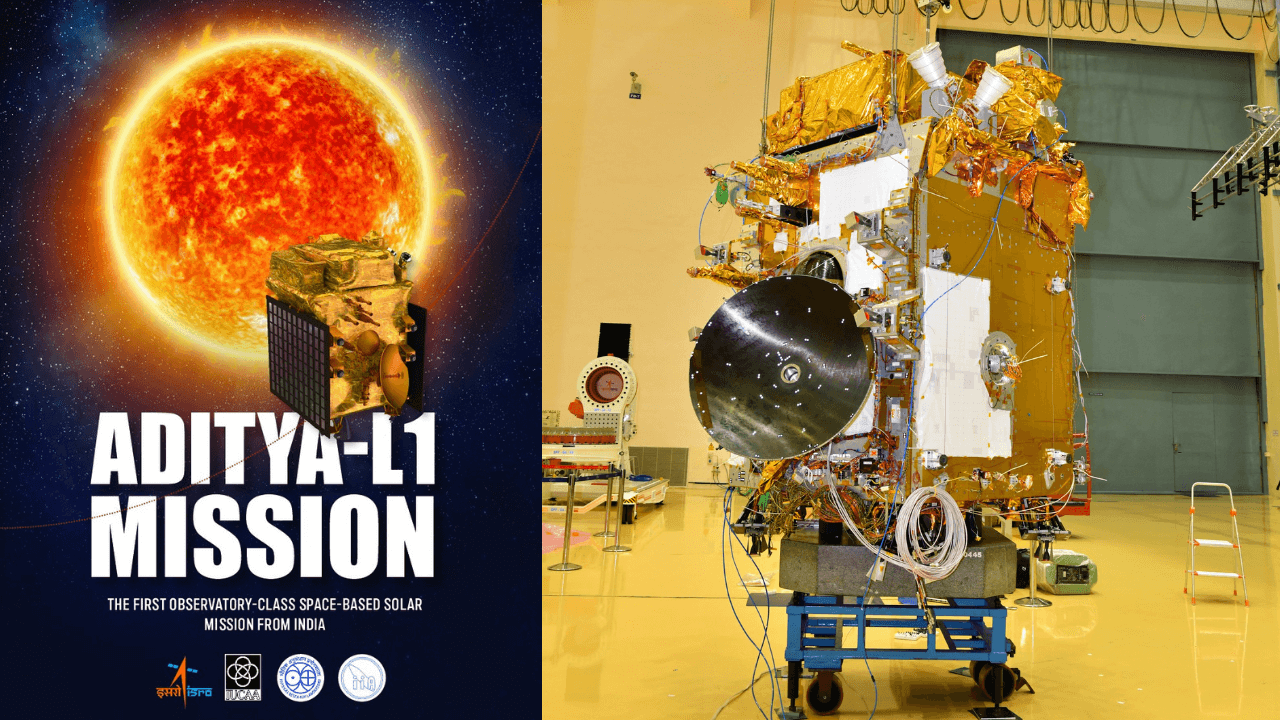Aditya L1 Mission UPSC
The Aditya L1 Mission was launched on 2nd September at 11:50 am IST from Sriharikota.
Aditya L1 is India’s pioneering solar mission that focuses on the study of the Sun from space. This space-based observatory is designed to orbit around the L1 Lagrange point, which is positioned approximately 1.5 million kilometers away from Earth in the Sun-Earth system. The L1 point’s unique location allows the spacecraft to continuously observe the Sun without being obstructed by the Earth’s shadow or eclipses.
The mission holds the distinction of being India’s first space-based observatory-class solar mission. Its primary goal is to comprehensively study various aspects of the Sun, including its photosphere, chromosphere, and the outermost layer known as the corona.
By harnessing the advantages of the L1 orbit and the capabilities of its scientific payloads, ISRO‘s Aditya L1 is poised to provide valuable insights into solar phenomena, contributing to our understanding of the Sun’s behavior and its impact on space weather and Earth’s environment.
Aditya L1 Mission Launch Date
- Launch Date: 2nd September
- Launch Time:11:50 am IST (Indian Standard Time)
- Launch Place: Sriharikota, Andhra Pradesh
Aditya L1 Mission Objectives
- Explore the Sun’s Upper Atmosphere: Understand the dynamic behavior of the Sun’s upper layers, including the chromosphere and corona.
- Unravel Solar Heating and Ejections: Study how the Sun’s partially ionized plasma is heated, and investigate the initiation of solar mass ejections and flares.
- Analyze Particle Environment: Examine the particles and plasma around the Sun to learn more about their movement and behavior.
- Understand Solar Corona: Investigate the physics behind the Sun’s corona and its heating process.
- Diagnostics of Solar Plasma: Measure the temperature, velocity, and density of the coronal and coronal loops plasma.
- Track Solar Eruptive Events: Explore the development, dynamics, and origins of Coronal Mass Ejections (CMEs), significant solar events.
- Study Layered Processes: Identify the step-by-step sequence of events that lead to solar eruptive events across different layers.
- Map Magnetic Fields: Understand the structure and measurements of magnetic fields in the Sun’s corona.
- Space Weather Drivers: Explore the origin, composition, and dynamics of the solar wind, a key factor in space weather.
These objectives aim to deepen our knowledge of the Sun’s behavior and its influence on space weather, contributing to a better understanding of our solar system.
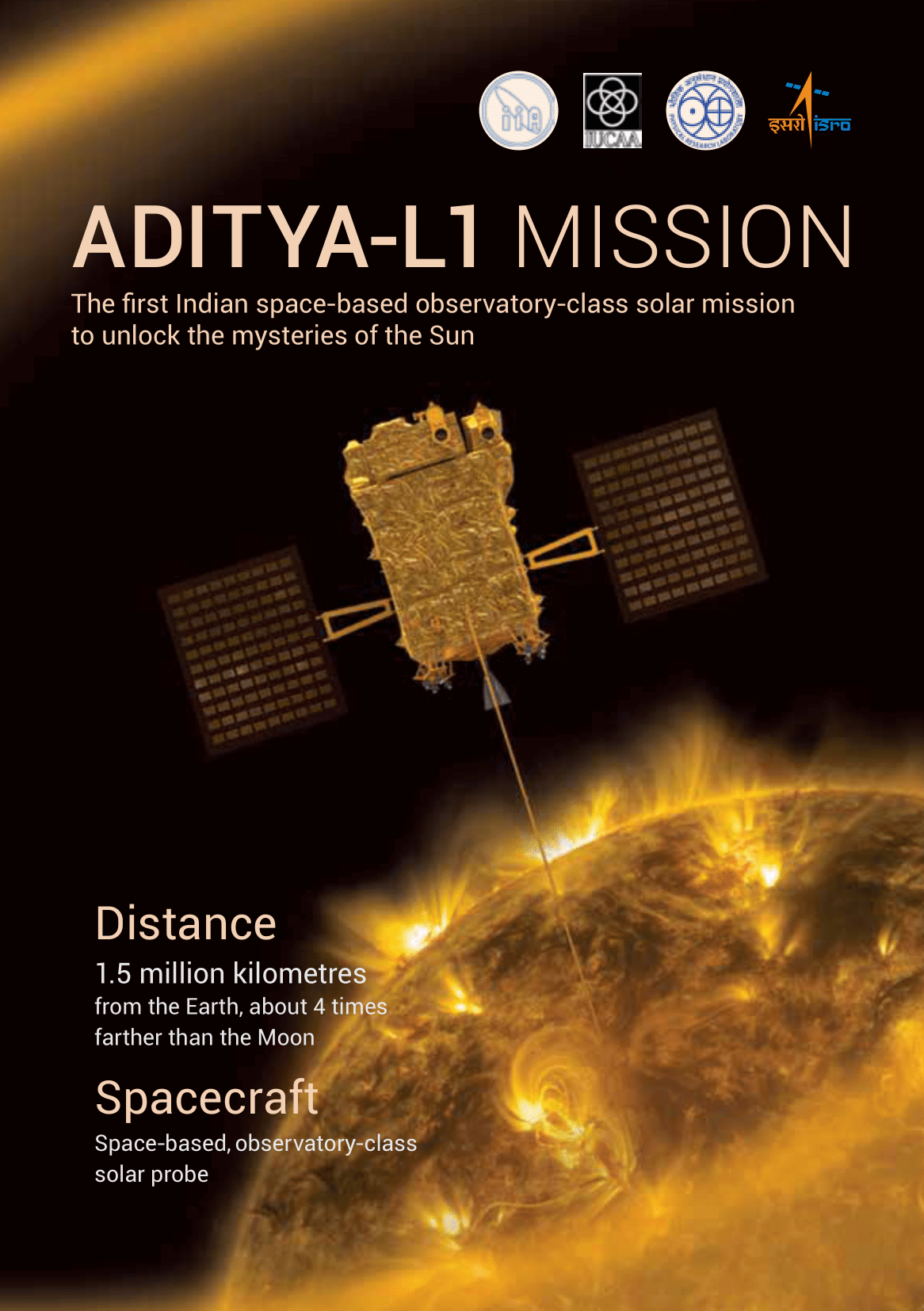
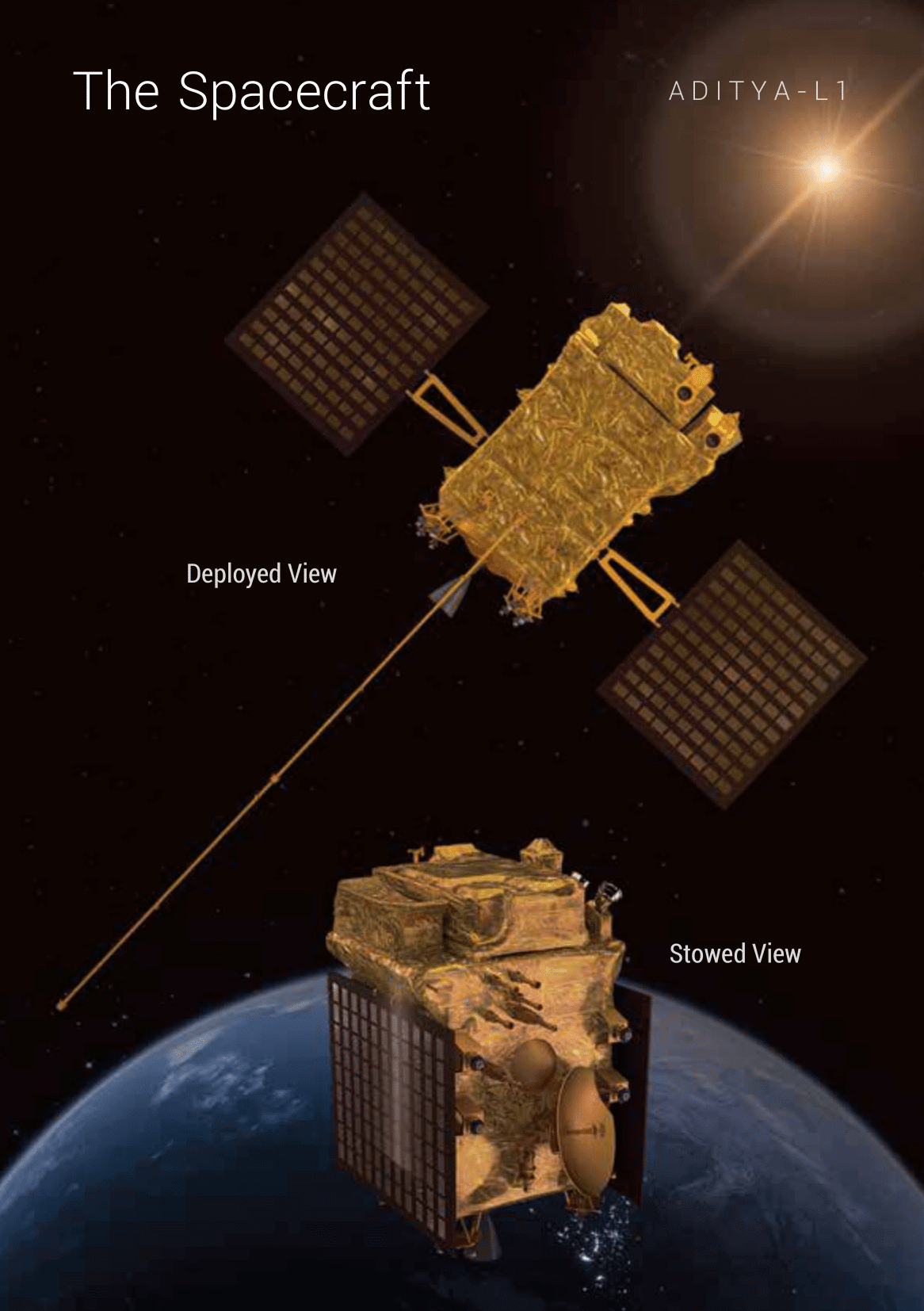
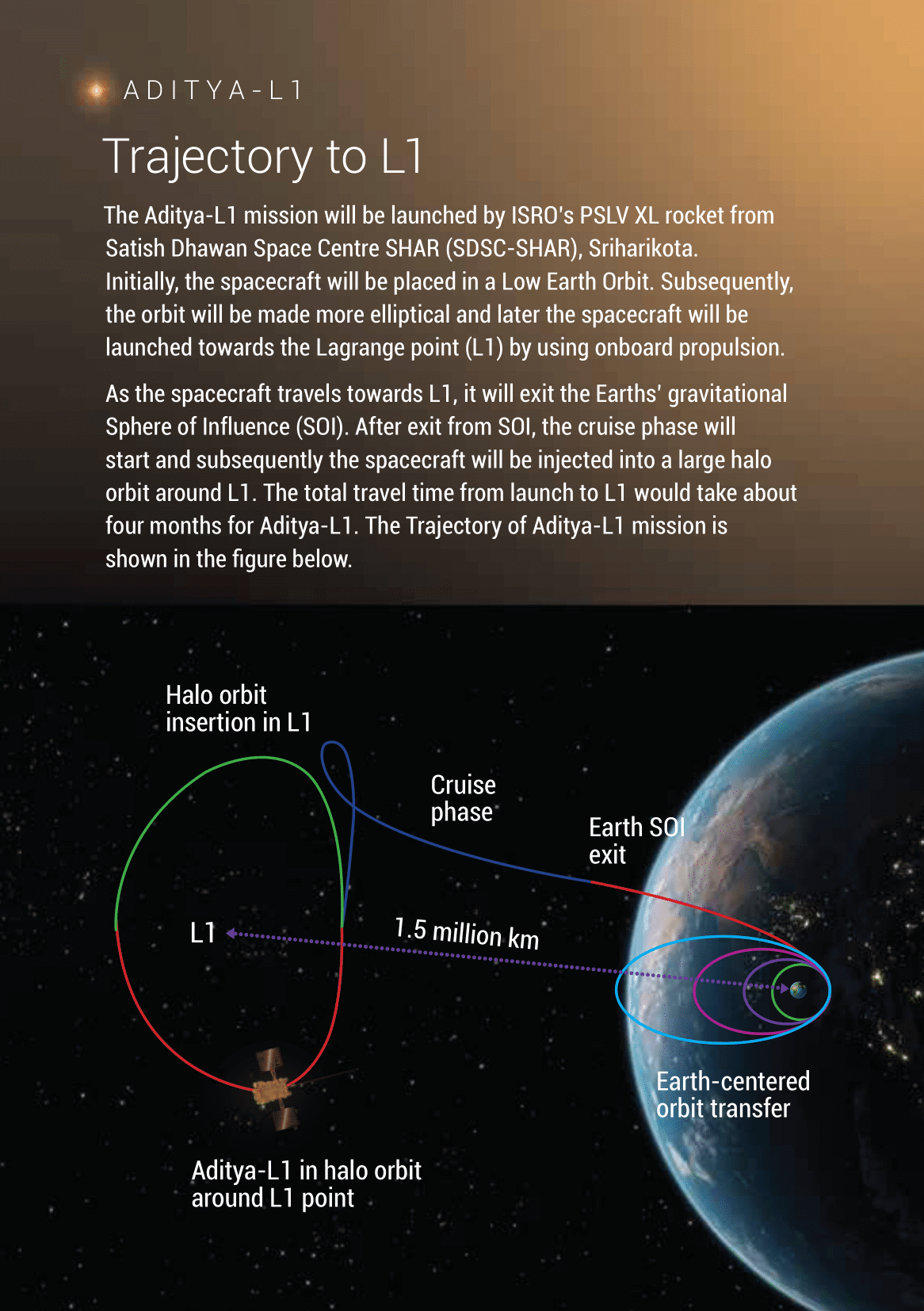
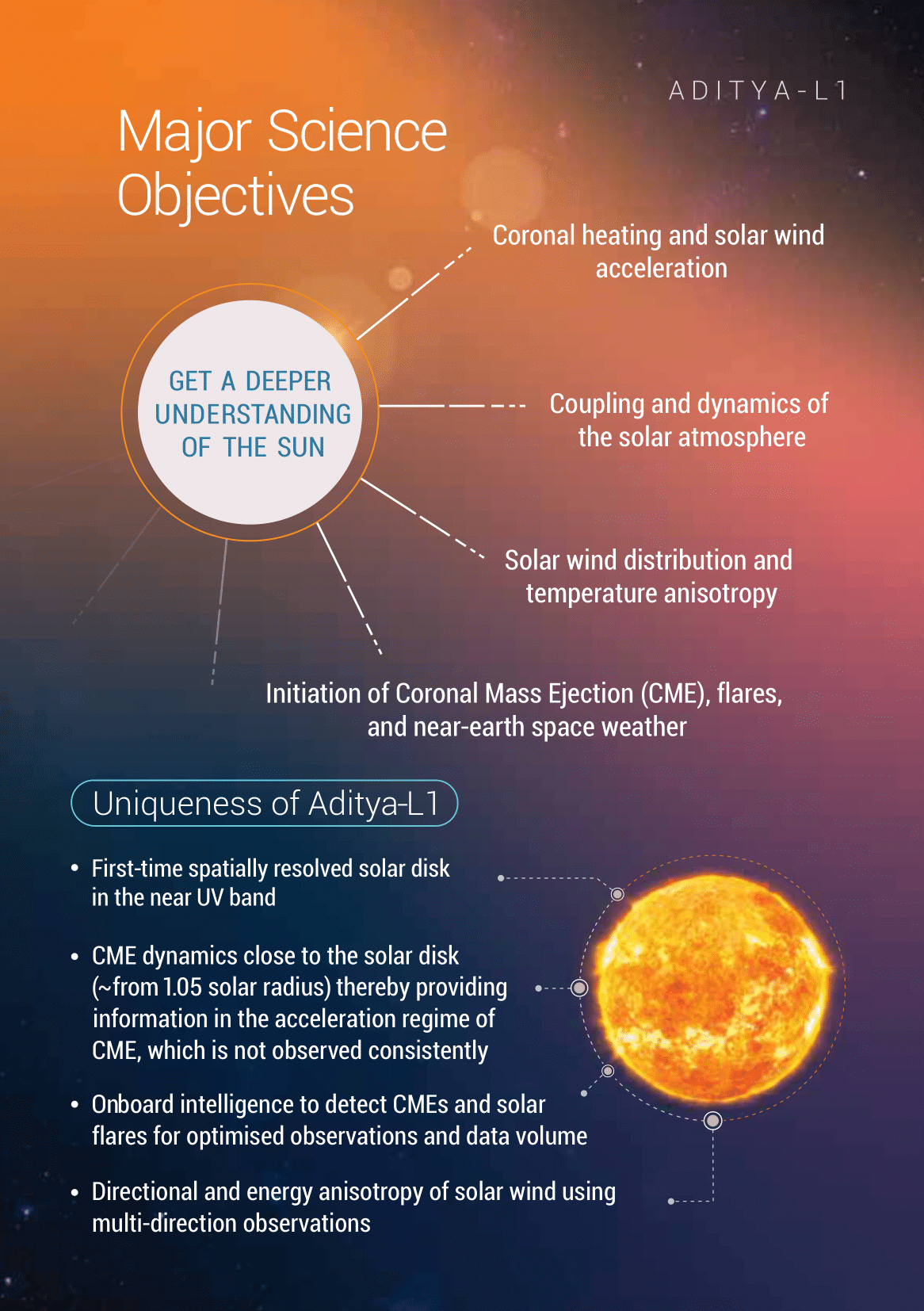
Aditya L1 Payloads
The Aditya-L1 mission is equipped with a suite of seven scientific payloads, each designed to carry out a systematic study of the Sun’s various aspects. These payloads include:
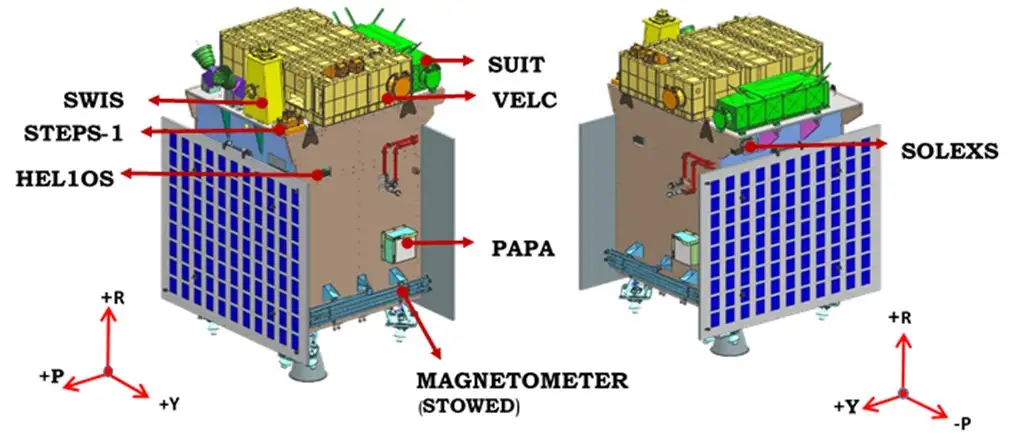
- Visible Emission Line Coronagraph (VELC): VELC focuses on the solar corona and the dynamics of Coronal Mass Ejections (CMEs). It provides detailed observations of these phenomena, helping us understand their behavior and characteristics.
- Solar Ultra-violet Imaging Telescope (SUIT): SUIT captures images of the Solar Photosphere and Chromosphere in the near Ultraviolet (UV) spectrum. It also measures variations in solar irradiance in the near UV range.
- Aditya Solar Wind Particle EXperiment (ASPEX): ASPEX studies the solar wind and energetic ions emanating from the Sun. It analyzes their energy distribution, contributing to our understanding of solar particle interactions.
- Plasma Analyser Package for Aditya (PAPA): PAPA is dedicated to studying solar wind and energetic ions, providing insights into their properties and behavior.
- Solar Low Energy X-ray Spectrometer (SoLEXS): SoLEXS focuses on detecting and analyzing X-ray flares emitted by the Sun across a wide range of X-ray energies.
- High Energy L1 Orbiting X-ray Spectrometer (HEL1OS): HEL1OS complements SoLEXS by studying X-ray flares from the Sun over a broader X-ray energy spectrum.
- Magnetometer: The Magnetometer payload is capable of measuring interplanetary magnetic fields at the L1 Lagrangian point. It contributes to our understanding of the Sun’s magnetic behavior and its influence on space weather.
The collection of Aditya L1 payloads is anticipated to offer essential insights that contribute to our comprehension of various solar phenomena. These include the enigma of coronal heating, the behavior of coronal mass ejections, the nature of pre-flare and flare activities, the dynamics of space weather, and the propagation patterns of particles and fields. These crucial pieces of information are instrumental in advancing our understanding of solar processes and their impacts.
What is L1
Lagrange points are special positions in space where the gravitational forces of two celestial bodies (like the Sun and Earth) and the centrifugal force cancel each other out, creating a sort of gravitational “parking spot” for objects. There are five Lagrange points in the Sun-Earth system, each labeled L1 through L5.
L1 specifically is located between the Sun and Earth, about 1.5 million kilometers away from Earth. This placement allows an object at L1 to stay in a relatively stable position relative to both bodies, making it an ideal location for telescopes and spacecraft that need to continuously observe the Sun without having to constantly adjust their orbits.
- Weekly Current Affairs 2025 PDF For Bank, SSC, UPSC Exams
- Unsung Heroes of India: 10 Unknown Freedom Fighters You Should Know
- 26 December Current Affairs 2023 in English
- Daily Current Affairs 2025, Check Today’s Current Affairs
- April Month Current Affairs 2024, Download PDF
- June Month Current Affairs 2024, Download PDF

Hello, I’m Aditi, the creative mind behind the words at Oliveboard. As a content writer specializing in state-level exams, my mission is to unravel the complexities of exam information, ensuring aspiring candidates find clarity and confidence. Having walked the path of an aspirant myself, I bring a unique perspective to my work, crafting accessible content on Exam Notifications, Admit Cards, and Results.
At Oliveboard, I play a crucial role in empowering candidates throughout their exam journey. My dedication lies in making the seemingly daunting process not only understandable but also rewarding. Join me as I break down barriers in exam preparation, providing timely insights and valuable resources. Let’s navigate the path to success together, one well-informed step at a time.
